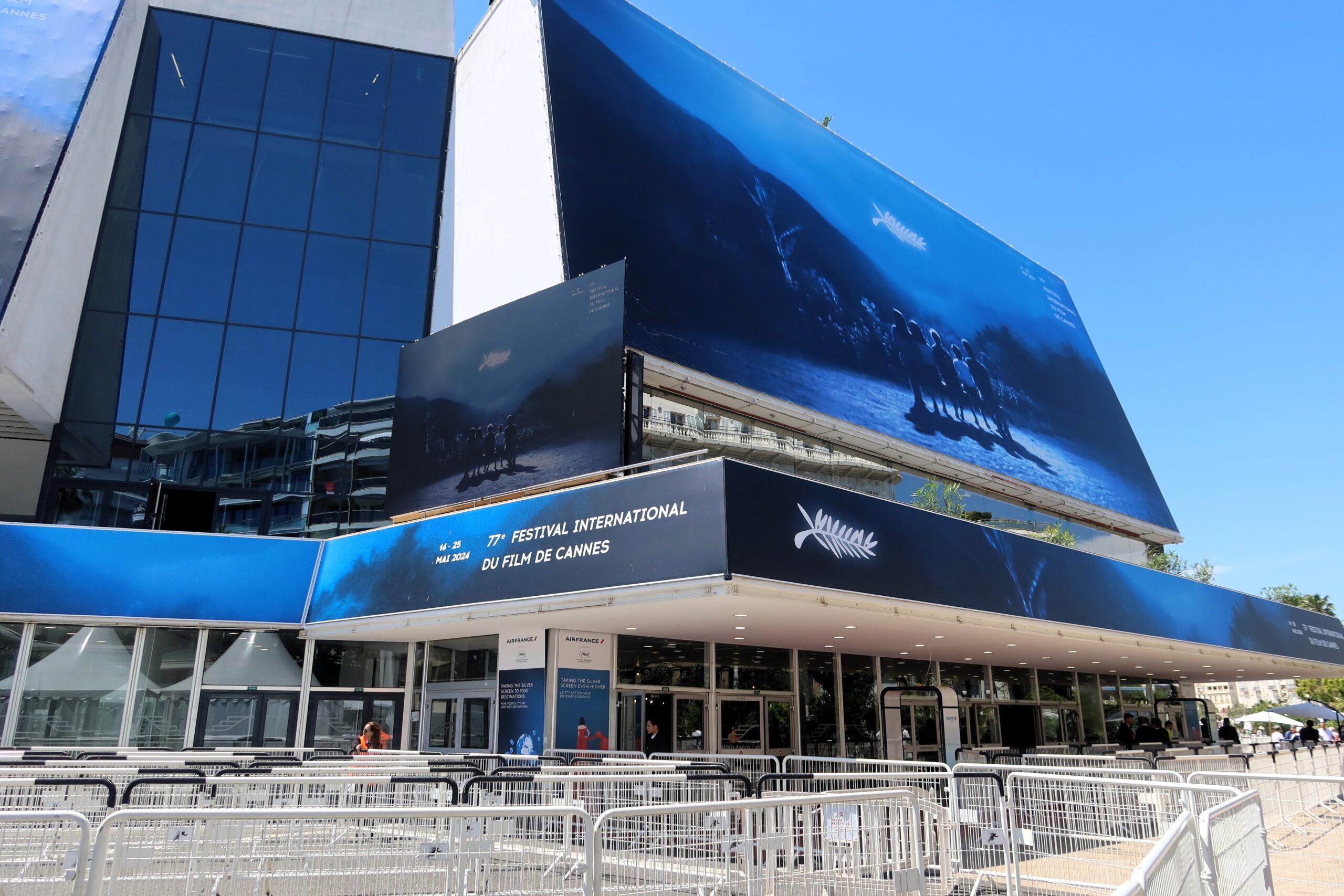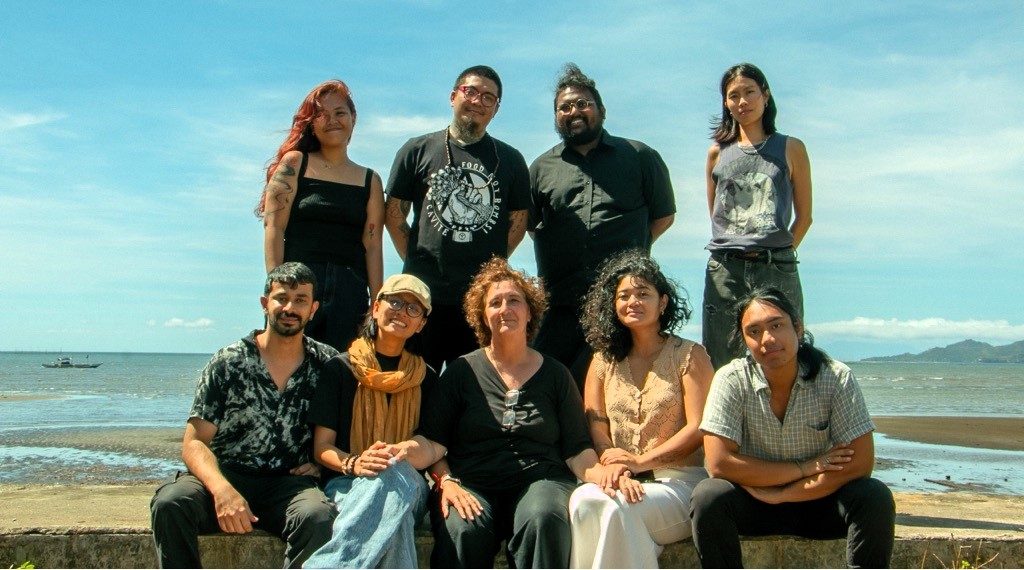SUMMARY
This is AI generated summarization, which may have errors. For context, always refer to the full article.
![[Only IN Hollywood] 43 years later, Nora Aunor’s ‘Bona’ returns to Cannes](https://www.rappler.com/tachyon/2024/05/only-in-hollywood-bona-restored-2-scaled.jpg)
CANNES, France – The 77th Cannes Film Festival has officially opened, offering again a cinematic feast. One of the film treats is that 43 years after it premiered in Cannes’ Directors’ Fortnight, Nora Aunor’s Bona, directed by the late great Lino Brocka, returns as an official Cannes Classics selection.
Aside from Bona, the Philippines is represented in the Directors’ Fortnight and other programs of the world’s most prestigious film festival. Joey Reyes, returning to Cannes this time as the chair of the Film Development Council of the Philippines (FDCP), heads the Filipino delegation.
Bona, a drama about a fan (Nora) who idolizes a movie bit player (Phillip Salvador), is considered one of Philippine cinema’s greatest films. It returns to the Croisette as a restored 4K version.
All thanks to the restoration efforts by Carlotta Films, led by its CEO and co-founder, Vincent Paul-Boncour, and Kani Releasing at the Cite de Memoire laboratory (Paris) from the original 35mm image and sound negatives preserved by LTC Patrimoine.
Written by Cenen Ramones, Bona debuted in the 1980 Metro Manila Film Festival and premiered in the Directors’ Fortnight in the 1981 edition of the film festival held in the south of France. The film’s cast includes Marissa Delgado, Raquel Monteza, Rustica Carpio, Nanding Josef, Spanky Manikan, and Joel Lamangan.

In my email interview, Vincent wrote: “France was certainly the country where Filipino cinema arrived, outside Asia. In the ’70s, there appeared an incredible number of talents, new generations of film directors, actors, writers, and technicians, in what is called the second Golden Age of Filipino cinema, the New Wave.”
“Thanks to Pierre Rissient, also Pierre-Henri Deleau (Directors’ Fortnight general delegate), and the Jalladeau brothers (Festival des 3 Continents, Nantes), the France audience had the chance to discover masterpieces from Lino Brocka, Mike de Leon, and others.”
“But unfortunately, most of their films haven’t been released in French cinemas or when it happened, in a very low-key way. It could explain why not so many people know Filipino films, except at festivals. After the mid-’80s, all these films became impossible to watch, with the issue of rights and materials.”
“We do believe that nowadays, with a growing audience interest in Asian films, it’s time to bring more Filipino films to France and the world, to discover, more than rediscover, Philippine cinema, including works by the big directors such as Lino Brocka, from whom we saw a very few of his titles.”
“Bona was invisible for 40 years, almost unknown. It’s one of Lino Brocka’s masterpieces, with and produced by National Artist Nora Aunor.”
“Lino Brocka is at the level of Fassbinder, Pasolini, one of the rare geniuses of cinema. His cinema is timeless.”
“Brocka was talking about the Philippine people and society but his story, his characters are universal and could resonate with anybody across the world. More especially, nowadays, his portrait of his female characters has certainly more scope than there was at the time.”
Vincent enthused about Bona as a true film classic: “Bona is talking of its times – the ’80s, the Philippines, the popular power of cinema back then, the society. But its theme, story, characters, and conflicts could be the same nowadays, and more especially, with the portrait of his female character.”
“So, we believe Bona will talk as much to the audience at the time, even more so nowadays. In this sense, the film is a true classic and very modern.”
New York-based writer and media producer Gil Quito told me via email how the restoration of Bona, showcasing one of Nora’s finest performances, came about:
“After I met Vincent in Cannes in 2022 when we presented at the premiere of the restored Itim, I became good friends with him. In our correspondence, I would occasionally suggest (Filipino) films that might interest him for release or restoration.”
“Bona had always been on his radar since the late Pierre Rissient told him about it. He became even more enthusiastic later when talking about Bona with Pearl Chan and Ariel Esteban Cayer, Hong Kong-based heads of Kani Releasing, which has issued a number of Philippine films in the United States, including Lino Brocka’s Cain and Abel and Lupita Concio’s Minsa’y Isang Gamu-gamo (Once a Moth) starring Nora.”
“Vincent asked if I might have a copy of Bona in my archives that he could check out. I sent it to him with the caveat that the video quality was in poor condition but that it was the best possible that could be found. Seeing even the bad copy made Vincent more determined to search for the film for possible restoration.”
“Soon after, Vincent initiated the effort of acquiring the rights for restoration and distribution. I said that Nora was the producer and that the best person who could help with reaching out to her would be the Cultural Center of the Philippines’ Film Department and Cinemalaya officer Vicky Belarmino.”
“In an industry riven with factions, Vicky was one person I knew who was on good terms with everyone, being also one of the most patient and diplomatic persons one could find.”
“Vincent and Vicky hit it off right away. She recommended the best ways to approach Nora, which eventually included Vicky traveling a number of times to Nora’s home and proposing discussions at nearby restaurants.”
“The negotiations, with Kami joining as co-partners in the restoration and distribution, took months, with Vicky often having to field queries from Nora early in the morning or late at night.”
“In our research, we had looked for Cenen Ramones, the film’s screenwriter, who seems to have dropped out of sight since Bona except for a couple of episodes for Wansapanataym. Sadly, we learned she had passed away.”
“Vincent was so confident about Bona that Carlotta and Kami held a work-in-progress presentation of the restored first 20 minutes of Bona at the Cannes Marche du Film last year.”
“Vincent had to check with Cannes exactly what was allowed to be done or said at the presentation so as not to jeopardize hopes of submitting the film for Cannes 2024. There was no problem, of course, that the presentation was to be held on May 21, Nora’s birthday.”
“The excerpt that screened looked glowing and pristine. Thankfully, Pierre, after the film’s international premiere at the Cannes Directors’ Fortnight in 1981, deposited the film’s negatives with a Paris film lab, TLC Patrimoine. He also deposited the French subtitled version for Directors’ Fortnight with the Cinematheque Francaise.”
“Critical to the rediscovery of the film elements, especially the negatives, were interviews conducted by University of Illinois Urbana-Champaign professor Jose B. Capino with Rissient for a book he was writing on Brocka and his films. In the interviews, Rissient entrusted Capino with the location of a number of Brocka’s films.”
“The LTC lab has since closed and liquidated its vast jumble of negatives and prints, some of which have turned anonymous, detached from their physical or catalog identifiers.”
“Eventually, the lab Cite de Memoire took over LTC’s storage and began the laborious work of making an inventory of its negatives and prints. Upon learning about Vincent’s search for the Bona elements, they got back to him that the elements had survived and were in quite good condition at that.”

“Rissient depositing the film with LTC proved fortuitous. Sometime after, there was a big fire at the house of Nora’s brother, Ed Villamayor, where her NV Productions negatives and prints were stored. This was the reason why, for many years, it was believed in Philippine film circles that Bona was another of Brocka’s films that has been lost irretrievably.”
“Earlier today, Vincent texted Vicky and me that he was just at the restoration lab for a last check of the DCP (digital cinema package) before sending it to Cannes. He wrote: ‘The restoration is beautiful, and watching it again, on the big screen, whoa, what a film, so strong, so powerful, so modern also.'”
“I texted back that from what I remember, the film surely has resonance in our modern obsession with celebrity…that wanton hydra that grows ever more consuming, fed by the ceaseless deluge of social media.”
“I’m looking forward to somehow finding a deeper understanding of this obsession and ourselves when the world sees the restored Bona for the first time at the Cannes Film Festival, ironically an epicenter itself of celebrity.”
I saw the restored first 20 minutes in Cannes last year – I can’t wait to watch the entire film in all its 4K restored glory here in Cannes.
Bona is in great company. Also to premiere under Cannes Classics, which is celebrating its 20th anniversary this year, are restored masterpieces by esteemed directors: Akira Kurosawa’s Seven Samurai (marking its 70th anniversary), Wim Wenders’ Paris, Texas, Jean-Luc Godard’s Scenarios, and Jacques Demy’s The Umbrellas of Cherbourg (60th anniversary).
By coincidence, Cannes Classics is premiering the restored Bona just a couple of days before the May 21 birthday of Nora, truly one of Philippine cinema’s greatest actresses. She turns 71. It’s remarkable that Nora was only in her late 20s when she decided to produce Bona.

Vincent said, “With the posts on our social networks, and Kami Releasing, our co-partner for the acquisition, restoration, and release, we saw the amazing reactions to the new life of Bona, and now, its world premiere as a selection at Cannes Film Festival’s Cannes Classics section.”
“You can feel the power of the film, unseen by so many. The Western audience knows very little and couldn’t imagine the status of Nora, how big a star she is, a National Artist.”
“This is exciting in our work to make a film discovered by the audience of our countries – a director, an actor/actress, genre, nationality. It’s just the beginning of the Bona adventure!”
Other Philippine films in Cannes

Bianca Balbuena, a key figure in the other Philippine and Asian entries, said to me via email, “Actually, we are well represented in Cannes in all sections except the main competition.”
She cited several films led by Viet and Nam, “a Cannes Official Selection in Un Certain Regard – lead producers, sound recordist, and poster designer are Filipinos. It also got FDCP’s ASEAN Co-Production Fund.”
Bianca also pointed out the Directors Factory Philippines in the Directors’ Fortnight and Radikals, a short film by Arvin Belarmino, which competes in Semaine de la Critique.

Bianca, who was honored as Asia Pacific Screen Awards’ Producer of the Year in 2017, provided this information about Viet and Nam, directed by Vietnamese auteur Trương Minh Quý: “In the depths of the underground coal mines, where danger awaits and darkness prevails, Nam and Việt, both young miners, cherish fleeting moments, knowing that one of them will soon leave for a new life across the sea.”
“But the departure cannot happen as lying somewhere deep within the earth, in the far-off forest is Nam’s father, a soldier, whose remains they’re compelled to find. Together, following the mysteries of memories and dreams, they retrace the path to the past.”
“The third feature film by Trương Minh Quý was shot on 16mm film on an adventurous journey from the North to the Central Highlands and the South of Vietnam.”
“The film is a triumphant eight-country co-production led by Epicmedia Productions Inc (Philippines). One of the lead producers and CEO of Epicmedia, Bradley Liew, met Director Quý at the Asian Film Academy of the Busan International Film Festival in 2012.”
“They decided to work together for the first time in 2020, when the timing was right for an international collaboration. Bianca joined in the early stage of development and financing. The project was swiftly boarded by an ensemble of internationally renowned co-producers.”
Bradley Liew, Bianca’s husband, said in a statement, “Like finding a diamond amidst the darkness of a coal mine, Việt and Nam is a rarity that ignites a producing commitment, which makes you want to give everything to bring it to life. Making this film is a combination of belief in the material along with over a decade of friendship with the director.”

With the film, Trương Minh Quý becomes the first Vietnamese-national director at the Cannes’ official selection.
Bianca also gave information about the Directors Factory Philippines, a Cannes initiative that focuses on a country each year. This is only the second time that the initiative has chosen an Asian country to highlight.
From Bianca: “Cannes Directors’ Fortnight project Directors Factory Philippines wrapped filming in the Shrine City of the Philippines called Dapitan. It is in the province of Zamboanga del Norte, Philippines.”
“Four short films were conceptualized, written, shot, and edited in Dakak Resort in Dapitan, which was the team’s home for more than a month. Four directing pairs were selected in Manila in October.”
The following four pairs of filmmakers, according to Bianca, are:
“Eve Baswel (Philippines) and Gogularaajan Rajendran (Malaysia) directed Walay Balay, the portrait of a mother and daughter evacuated during wartime to a safe neighborhood they will call home until they receive an official letter approving their relocation.”

“The film stars Lav Diaz’s mainstay Shaina Magdayao (Season of the Devil, The Halt, Essential Truths of the Lake), and the star of Lulu Wang’s Expats, Ruby Ruiz.”
“Maria Estela Paiso (Philippines) and Ashok Vish (India) directed Nightbirds. The mystical Tigmamanukan bird is sent by the bird council to help Ivy break free from her husband, who spends the couple’s money at cockfighting. The short stars famous Filipino comedian Pokwang.”

“Arvin Belarmino (Philippines) and Lomorpich Rithy (aka YoKi) (Cambodia) directed Silig. Stubborn and feisty Mamang, dying from cancer, is back in her hometown to organize her cremation. This film stars veteran actresses Sylvia Sanchez and Angel Aquino.”
Paris-based Ryan Arbilo is Silig‘s producer and cinematographer.
“Don Eblahan (Philippines) and Tan Siyou (Singapore) directed Cold Cut, whose cast is composed of purely local talents from Dapitan City. Joy, a 19-year-old student from a sleepy beach town, signs up as a contestant at the local talent show. As she enters the audition building, a chance encounter with a mysterious butcher leads her farther away from the audition site into an increasingly strange world.”

“To support this decade-long Cannes Directors Fortnight project with creator and producer Dominique Welinski, and to help in bringing a spotlight to the new generation of Philippine and Asian voices to world cinema, an ensemble of companies and organizations in the Philippines joined forces in bringing this high profile project to fruition.”
“Anima Studios of Kroma Entertainment with its general manager, Bianca Balbuena, also supported the project, together with Paul Soriano of Ten17P, from creative collaboration to financing and to overseeing post-production.”
“Directors Factory has been running since 2013 and has worked with 57 directors with 70 different nationalities, shot in 12 different countries, bringing them to the spotlight, and produced 30 multi-awarded short films.”
Bianca shared in a statement: “We are deeply honored to be chosen. We need to put a spotlight on the young voices of Philippine cinema. I was extremely happy to bring the Directors Factory to the Philippines.”
“I didn’t expect it to happen so fast. Thanks to Julien Rejl, the artistic director of Quinzaine des Cinéastes, who agreed with us about 2024 being the perfect time for the Philippines and Southeast Asia.”
Arvin Belarmino has not one but two entries. His short, Radikals, competes in Semaine de la Critique, which describes the Filipino film: “A young rookie from a bizarre chicken-dance group faces a heckler after being the worst dancer at a performance – leading him to a series of strange events that reveal what the group does to their weakest link.”
Radikals is the only entry from Southeast Asia in a field of 13 shorts.

On Semaine de la Critique’s website, Arvin is described as “a Filipino filmmaker who is renowned for directing numerous experimental and narrative short films.”
“His debut feature project, Ria, earned him selection for the 2022 Festival De Cannes Cinéfondation La Residence and won the CNC pitch award. Arvin is an alumnus of Talents Tokyo, Locarno Filmmakers Academy, Produire Au Sud Nantes, and La Fabrique Cinema program.”
Here’s to two weeks of glorious hours of wonder, intrigue, suspense, laughter, and drama in the dark! – Rappler.com
Add a comment
How does this make you feel?

![[Only IN Hollywood] Cannes climaxes with historic honors for films celebrating sisterhood](https://www.rappler.com/tachyon/2024/05/cannes-may-29-2024.jpg?resize=257%2C257&crop_strategy=attention)




There are no comments yet. Add your comment to start the conversation.